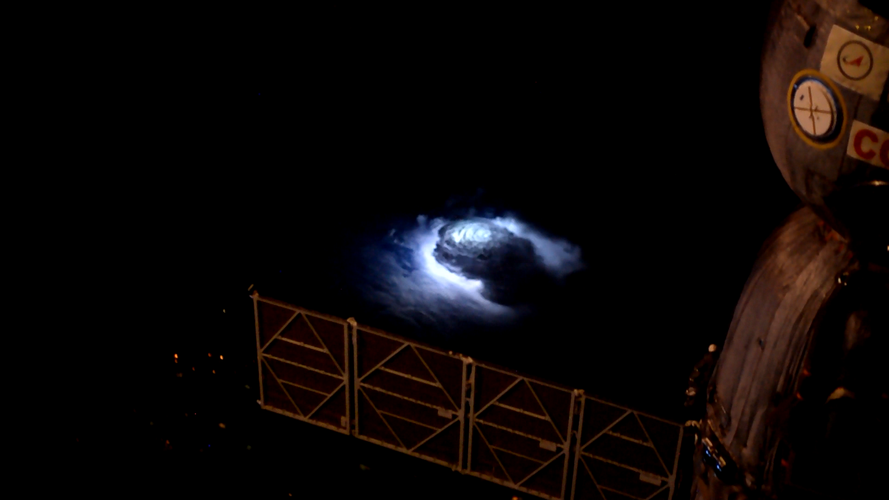A camera like our eyes

The additional camera on top is the Davis camera that uses 'event based' technology. Instead of taking images by collecting light through the camera shutter, the camera measures differences in light and uses that information to create an image. A person sitting perfectly still in a lit room would not be registered on a Davis camera as the light does not change. If the person starts moving, a Davis camera would record the change in light and produce a video.
This process is similar to how the human eye works, humans are more sensitive to change in vision and interpret a scene with much less information. The Davis technology can film up to a speed equivalent to 100 000 images per second needed to capture the TLEs that are over in the blink of an eye – as little as a millisecond.
“We are excited to have Andreas Mogensen look for thunderstorms with the new event camera. Last time he captured a blue jet, so we hope for even more pictures over his six months stay. This will be the first time an event camera is used to observe lightning events by an astronaut” said Olivier Chanrion, senior researcher at DTU Space.



